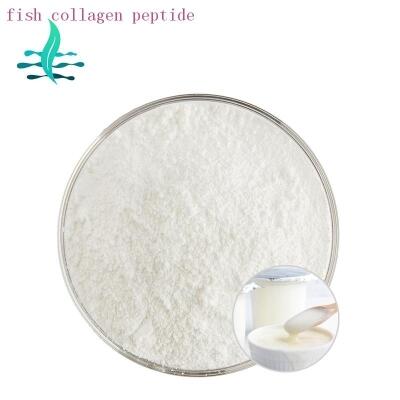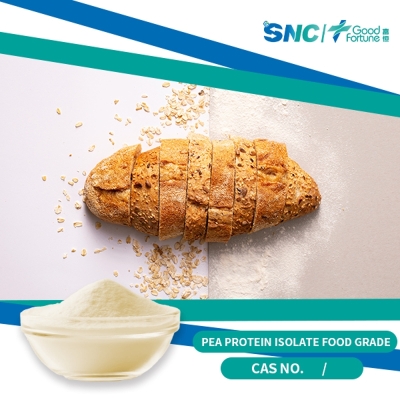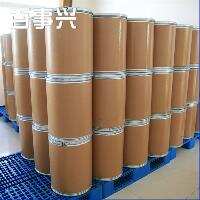Lysine New Market Falls in Southeast Asia Imports Continue to Boom
-
Last Update: 2020-07-03
-
Source: Internet
-
Author: User
Search more information of high quality chemicals, good prices and reliable suppliers, visit
www.echemi.com
export statistics show that in January this year, China's lysine exports as high as 19,000 tons, February-March lysine exports still maintain this order of magnitudeHowever, the import situation in China captures the new information of the international market of lysine, that Southeast Asia will become a new center for the rise of the breeding industry, and thus promote the rapid growth of the region into a major new market for lysineimports continue to boom
Although lysine and glutamate are the same as the amino acid bulk varieties of our country, in contrast, lysine production history is much shorter than glutamateIn 1980, Dalian Pharmaceutical Factory in China for the first time to try to produce lysine raw materials, and as one of the raw materials of large infusion productsAccording to statistics, from 1998 to the present 10 years, the total output of domestic medicinal grade lysine has always been maintained at between 400 to 500 tons, and has been favored by the pharmaceutical industry" lysine as a children's wisdom-boosting drug hot sales scene has never appeared, it is said that the domestic market has a short period of prosperity of lysine production At that time, about one or twenty enterprises in the country produced lysine, the total production capacity once reached 10,000 tons, but because lysine health care products market did not really form the climate, resulting in lysine national "big rotten market", a large backlog of lysine raw materials in the warehouse can not be sold, resulting in the closure of many lysine production plantsthe real "take-off" of the lysine industry in China began in the mid-1990sResearch reports from the West reported that the addition of a small amount of lysine in the feed can greatly shorten the storage time of pigs, cattle, broilers and other livestock, increase its meat rate, and its price is lower than the use of bean cake and other traditional feed additives (in recent years, the international soybean and bean cake prices soared, resulting in a sharp increase in the cost of the breeding industry), so, in just a few years, lysine quickly became the international market's most sought-after commodity, its annual sales rose in a straight lineBy the end of 2002, the global lysine market sales have exceeded 1 million tons, thus becoming the second in the international market to sell more than one million tons of amino acid productsat the same time, with the rapid development of China's breeding industry, lysine domestic market began to turn around, many provinces and cities from abroad a large number of imported feed grade lysine as a feed additive seine useIn fact, the price of foreign imported bean cake is too expensive to greatly limit its application in the domestic breeding industry, which further promotes lysine has become one of the main additives in China's breeding industryAt the same time, due to the popularuse of domestic lysine, the relatively high price of importly lysine has been gradually withdrawn from the Chinese market since 2005the market situation of the turn will naturally attract a part of the producers into the market, coupled with lysine production process and glutamate similar, the entry threshold is not high, many domestic glutamate producers began to plan the production of lysine as a new projectTherefore, with the rapid development of glutamate fermentation capacity in China in recent years, the lysine industry in China is also a "three-level jump" type of developmentSuch as the early 1990s, the total domestic lysine production is still hovering around 10,000 tons, to the middle of the rise to 60,000 tons, in 2000 the total national production of lysine jumped to 200,000 tons; As a result, China will lay the world's leading lysine producer and exporter status, nextPageat present, China's lysine export volume has accounted for about half of the output, in January this year China's lysine export volume as high as 19,000 tons, February to March lysine export volume still maintained this order of magnitudeJilin Province is currently The largest production and export of lysine in ChinaThe production of lysine in Jilin Province accounts for about 40% of the total production of lysine in China (Jilin has the country's largest corn starch processing industry, corn starch is the main lysine production raw materials)shift to imports from Southeast Asia
Due to the large number of lysine exports artificially caused the domestic feed-grade lysine products supply tight, the national authorities last July has reduced the export tax rebate rate of lysine from 13% to 6%, in order to curb lysine export growth rate too fast on the domestic feed processing industry of great pressureThe international market of lysine has begun to feel the pressure from China's exports of lysine productson the other hand, many provinces, including Guangdong, have imported lysine from neighbouring regions such as Thailand to meet the needs of the local feed processing industry, as domestic lysine has been exported to Western markets in recent years due to domestic supply constraints caused by the large export of lysine to Western marketsIt is reported that Guangdong imports lysine accounts for about 1/3 of China's total importly lysine sharethe new situation in the pipeline
The United States has long been the world's largest consumer of lysine, Europe is the world's second largest lysine consumer market after the United States, the annual consumption of lysine in the amount of 150,000 to 200,000 tons (currently lysine is mainly used as a feed additive, medicinal only a small proportion)Although Japan is the world's major lysine producer, but due to the small size of Japan's domestic breeding industry, its annual sales of lysine less than 10,000 tons, most of the Japanese lysine is used for exportHowever, the import of lysine from our country captures the new information of the lysine international market, namely, that Southeast Asia will become a new hub for the rise of the breeding industry and thus promote the rapid growth of the region into a new market for lysineIt is reported that last year in Southeast Asia' lysine consumption has been close to 80,000 tonsWith the rapid development of poultry industry in Vietnam, Thailand and Indonesia, the demand for imported lysine in these countries has risen in a straight line, so it can be believed that Southeast Asia is expected to become a new market for lysine exports in Chinadue to the domestic and foreign lysine market prospects, there are a number of domestic glutamate companies are planning or have been preparing to build a new production line of lysineSuch as Shandong Ronghua Industrial Co., Ltdplans to add 40,000 tons of lysine production line, Henan Lotus MSG Group proposed to build a new 80,000 tons of lysine production line And the domestic lysine production giant - Jilin Dacheng company proposed to add 100,000 tons of lysine production capacity; It is expected that by 2010, China's total production capacity of lysine is expected to reach more than 800,000 tons, thus overtaking BASF, ADM (the world's largest lysine producer with an annual production capacity of more than 120,000 tons) and Japan Concord Fermentation Co., Ltd., and other international lysine production giants, to become the world's largest lysine production power export statistics show that in January this year, China's lysine exports as high as 19,000 tons, February to March lysine exports still maintain this order of magnitude However, the import situation in China captures the new information of the international market of lysine, that Southeast Asia will become a new center for the rise of the breeding industry, and thus promote the rapid growth of the region into a major new market for lysine imports continue to boom
Although lysine and glutamate are the same as the amino acid bulk varieties of our country, in contrast, lysine production history is much shorter than glutamate In 1980, Dalian Pharmaceutical Factory in China for the first time to try to produce lysine raw materials, and as one of the raw materials of large infusion products According to statistics, from 1998 to the present 10 years, the total output of domestic medicinal grade lysine has always been maintained at between 400 to 500 tons, and has been favored by the pharmaceutical industry" lysine as a children's wisdom-boosting drug hot sales scene has never appeared, it is said that the domestic market has a short period of prosperity of lysine production At that time, about one or twenty enterprises in the country produced lysine, the total production capacity once reached 10,000 tons, but because lysine health care products market did not really form the climate, resulting in lysine national "big rotten market", a large backlog of lysine raw materials in the warehouse can not be sold, resulting in the closure of many lysine production plants the real "take-off" of the lysine industry in China began in the mid-1990s Research reports from the West reported that the addition of a small amount of lysine in the feed can greatly shorten the storage time of pigs, cattle, broilers and other livestock, increase its meat rate, and its price is lower than the use of bean cake and other traditional feed additives (in recent years, the international soybean and bean cake prices soared, resulting in a sharp increase in the cost of the breeding industry), so, in just a few years, lysine quickly became the international market's most sought-after commodity, its annual sales rose in a straight line By the end of 2002, the global lysine market sales have exceeded 1 million tons, thus becoming the second in the international market to sell more than one million tons of amino acid products at the same time, with the rapid development of China's breeding industry, lysine domestic market began to turn around, many provinces and cities from abroad a large number of imported feed grade lysine as a feed additive seine use In fact, the price of foreign imported bean cake is too expensive to greatly limit its application in the domestic breeding industry, which further promotes lysine has become one of the main additives in China's breeding industry At the same time, due to the popularuse of domestic lysine, the relatively high price of importly lysine has been gradually withdrawn from the Chinese market since 2005 the market situation of the turn will naturally attract a part of the producers into the market, coupled with lysine production process and glutamate similar, the entry threshold is not high, many domestic glutamate producers began to plan the production of lysine as a new project Therefore, with the rapid development of glutamate fermentation capacity in China in recent years, the lysine industry in China is also a "three-level jump" type of development Such as the early 1990s, the total domestic lysine production is still hovering around 10,000 tons, to the middle of the rise to 60,000 tons, in 2000 the total national production of lysine jumped to 200,000 tons; As a result, China will lay the world's leading lysine producer and exporter status , nextPage at present, China's lysine export volume has accounted for about half of the output, in January this year China's lysine export volume as high as 19,000 tons, February to March lysine export volume still maintained this order of magnitude Jilin Province is currently The largest production and export of lysine in China The production of lysine in Jilin Province accounts for about 40% of the total production of lysine in China (Jilin has the country's largest corn starch processing industry, corn starch is the main lysine production raw materials) shift to imports from Southeast Asia
Due to the large number of lysine exports artificially caused the domestic feed-grade lysine products supply tight, the national authorities last July has reduced the export tax rebate rate of lysine from 13% to 6%, in order to curb lysine export growth rate too fast on the domestic feed processing industry of great pressure The international market of lysine has begun to feel the pressure from China's exports of lysine products on the other hand, many provinces, including Guangdong, have imported lysine from neighbouring regions such as Thailand to meet the needs of the local feed processing industry, as domestic lysine has been exported to Western markets in recent years due to domestic supply constraints caused by the large export of lysine to Western markets It is reported that Guangdong imports lysine accounts for about 1/3 of China's total importly lysine share the new situation in the pipeline
The United States has long been the world's largest consumer of lysine, Europe is the world's second largest lysine consumer market after the United States, the annual consumption of lysine in the amount of 150,000 to 200,000 tons (currently lysine is mainly used as a feed additive, medicinal only a small proportion) Although Japan is the world's major lysine producer, but due to the small size of Japan's domestic breeding industry, its annual sales of lysine less than 10,000 tons, most of the Japanese lysine is used for export However, the import of lysine from our country captures the new information of the lysine international market, namely, that Southeast Asia will become a new hub for the rise of the breeding industry and thus promote the rapid growth of the region into a new market for lysine It is reported that last year in Southeast Asia' lysine consumption has been close to 80,000 tons With the rapid development of poultry industry in Vietnam, Thailand and Indonesia, the demand for imported lysine in these countries has risen in a straight line, so it can be believed that Southeast Asia is expected to become a new market for lysine exports in China due to the domestic and foreign lysine market prospects, there are a number of domestic glutamate companies are planning or have been preparing to build a new production line of lysine Such as Shandong Ronghua Industrial Co., Ltd plans to add 40,000 tons of lysine production line, Henan Lotus MSG Group proposed to build a new 80,000 tons of lysine production line And the domestic lysine production giant - Jilin Dacheng company proposed to add 100,000 tons of lysine production capacity; It is expected that by 2010, China's total production capacity of lysine is expected to reach more than 800,000 tons, thus overtaking BASF, ADM (the world's largest lysine producer with an annual production capacity of more than 120,000 tons) and Japan Concord Fermentation Co., Ltd., and other international lysine production giants, to become the world's largest lysine production power (Sukwe)
This article is an English version of an article which is originally in the Chinese language on echemi.com and is provided for information purposes only.
This website makes no representation or warranty of any kind, either expressed or implied, as to the accuracy, completeness ownership or reliability of
the article or any translations thereof. If you have any concerns or complaints relating to the article, please send an email, providing a detailed
description of the concern or complaint, to
service@echemi.com. A staff member will contact you within 5 working days. Once verified, infringing content
will be removed immediately.







